Do you want to learn how to make copper wind chimes? If so, you have come to the right place!We’ve prepared this comprehensive guide to address all of your concerns and offer useful suggestions so that you can take full advantage of what the tool has to offer. In order to make your own wind chimes, you will first need to gather the necessary materials. Then, we will provide a step-by-step tutorial on how to put them together. Finally, we will review some of the best copper wind chimes on the market today. Let’s get started!
Table of Contents
Copper Wind Chimes are a Common Yard Ornament
Copper wind chimes are a type of wind that is made of metal tubes, rods, or shells and suspended from a frame. They are commonly used as yard ornaments and can be found in a variety of sizes, shapes, and designs. Wind chimes are believed to have originated in Asia over 3000 years ago. There are many different legends and myths associated with wind chimes. You may be surprised to learn that the sound of wind chimes has been used for centuries as a way to ward off evil spirits. It’s thought by some people today, however, that these same bells can also bring good luck – whatever you’re looking for! Make your own copper bell with this simple guide and see if it gives any improvements in life quality around where they hang out. [1]
Materials list for Make Copper Wind Chimes
The materials you’ll need to create copper wind chimes are as follows:
- a hammer
- a saw (if you are using copper rods)
- a drill with a metal drilling bit
- copper pipes or rods in graduated sizes
- pliers
- wire cutters
- a drill with a metal drilling bit
- clear sealant or lacquer (optional) [2]
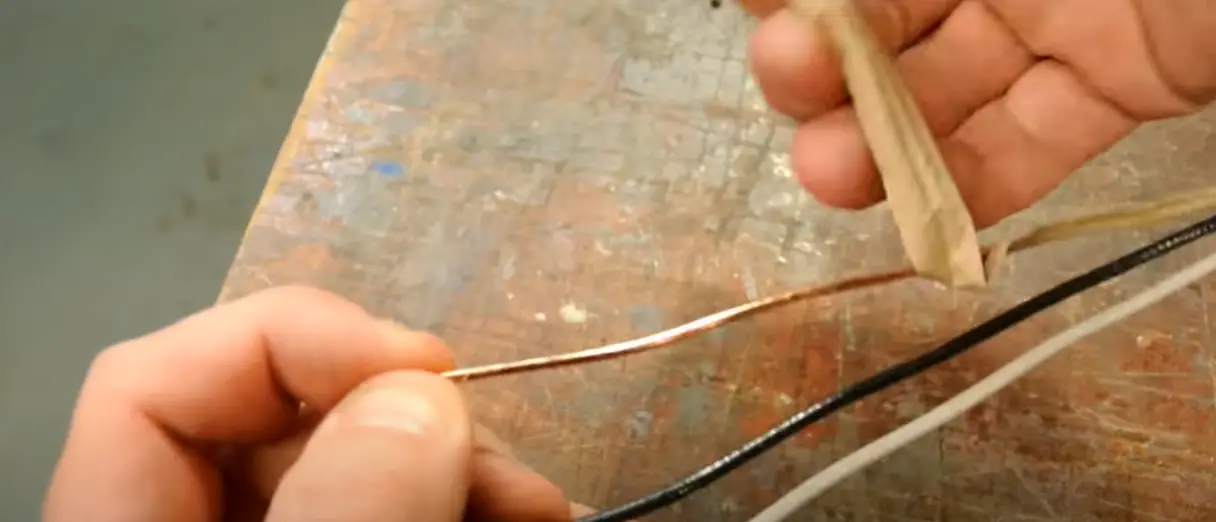
First, gather all of your materials. You will need: copper pipes or rods in graduated sizes, a hammer, wire cutters, a drill with a metal drilling bit, pliers, and a saw (if you are using copper rods). You may also want to use clear sealant or lacquer to protect your finished product.
Next, decide on the size and shape of your wind chime. Will it be long and slender? Short and squat? Once you have an idea, use your hammer to gently tap the copper pipes or rods into the desired shape. If you are using rods, you may need to see them to the correct size first.
Now it’s time to drill holes for the chime’s clapper. The clapper is what makes the soothing sound when the wind blows, so it’s an important part of the process! Drill a hole near one end of each pipe or rod. Make sure that the holes are large enough to accommodate your wire.
Thread your wire through the holes, making sure that all of the pieces are evenly spaced. You can use pliers to help with this step if necessary. When you’re happy with the arrangement, twist the wire around each pipe a few times to secure it in place. Finally, cut off any excess wire and seal the ends with clear sealant or lacquer. [3]
Step-by-step instructions for creating Copper Wind Chimes
By spending just a few hours on this project, you can create your own Copper Wind Chimes that will bring lasting enjoyment. Here’s everything you need to know to get started, including step-by-step instructions.
Draw Up a Plan & Prep the Materials
The first step is to have a plan and prepare the materials. You’ll need a few things before you get started:
- Copper tubing – this can be found at most hardware stores
- A soldering torch – again, available at most hardware stores
- Wire cutters
- Pipe cutter (optional)
- Tin snips (optional)
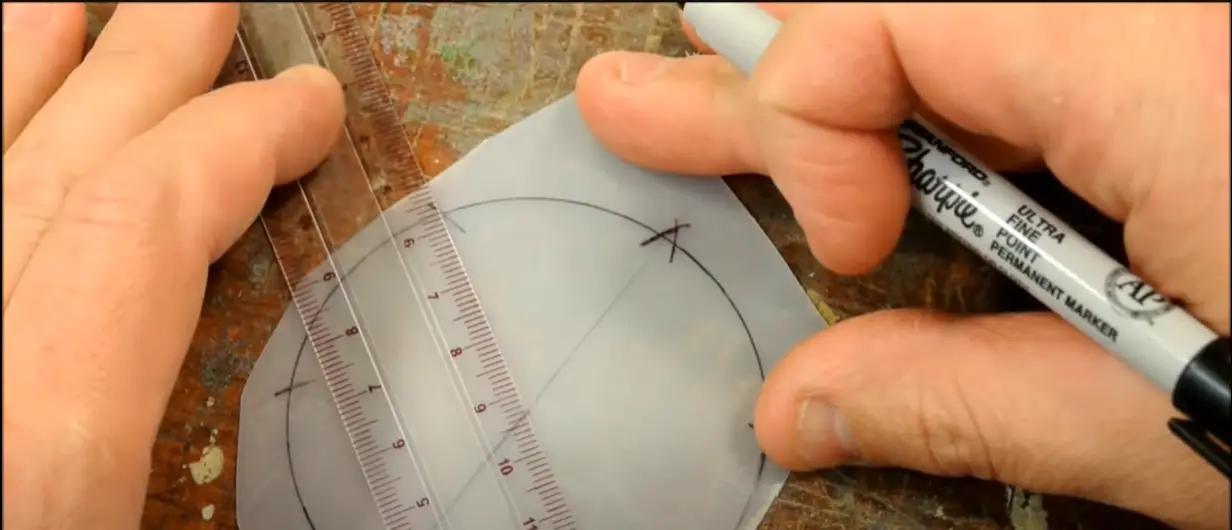
Once you have all of your materials gathered, it’s time to start prepping. If you’re using a pipe cutter, go ahead and cut your copper tubing into pieces of various lengths. If you’re not using a pipe cutter, no worries! You can still create beautiful wind chimes by simply cutting the tubing with tin snips. Just be sure to wear gloves, as the edges of the tubing can be quite sharp.
Once all of your pieces are cut, it’s time to start soldering. If you’ve never soldered before, don’t worry – it’s not as difficult as it looks. Simply heat up your torch and apply the flame to the two pieces of copper you wish to join together. Once the copper is heated, touch solder to the joint and watch as it melts and flows into place. Continue doing this until all of your pieces are joined together.
The Time Consuming Part
The most time-consuming part of making your own copper wind chimes is measuring and cutting the tubing. You’ll need a hacksaw for this – a regular hand saw won’t cut through metal as easily. Once you have all your pieces cut to size, it’s time to start assembling them. This is where having a good set of instructions comes in handy!
Again, there are plenty of resources online that can show you how to do this. And once you’re done, all that’s left to do is hang your chimes up and enjoy the soothing sound of copper wind chimes!
If you’re looking for a more detailed guide, there are plenty of instructional videos and articles online that can show you the ropes. After you’ve assembled your chimes, it’s time to add the finishing touches. This includes adding any charms or beads you want, as well as attaching the clapper (the part that makes the noise).
Putting It All Together
Now that you know all the materials and steps needed to make your own copper wind chimes, it’s time to put it all together! Start by threading your beads onto each of the lengths of wire. Then, twist each wire around the top ring until it’s secure. You can add as many or as few beads as you like – it’s totally up to you!
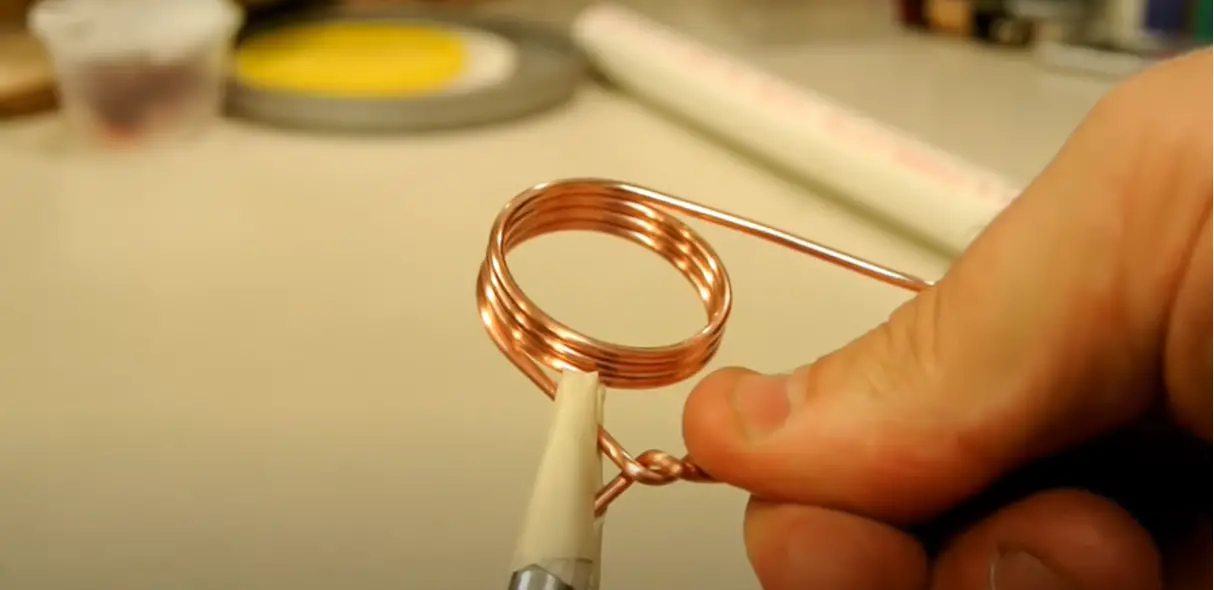
Next, take your bottom ring and attach each length of wire (with beads) to it in the same way. Once all wires are attached, use your hammer to gently shape the rings into a pleasing shape. You may want to experiment with different shapes until you find one that you like best.
Finally, hang your wind chime from a hook or nail and enjoy the soothing sound of the copper beads clinking together in the breeze! If you’re looking for a more challenging project, you can try making your own copper bell. This is a bit more complicated than making wind chimes, but the results are definitely worth it!
Finished Product
Now that you know how to make copper wind chimes, it’s time to see the finished product! Here are some pictures of beautiful copper wind chimes made by our talented team here at The Copper Workshop. We hope you enjoy making your own and please feel free to share photos of your finished project with us on social media! [4]
How Copper Wind Chimes Create Randomized Music
The music of copper wind chimes is created by the random movement of air. This means that each time the wind blows, the chimes will create a unique sound. The tone of the chime will also change depending on the strength of the wind.
Copper wind chimes are a great way to add some musical interest to your outdoor space. They can be hung from a porch or tree and will provide hours of enjoyment for you and your family.
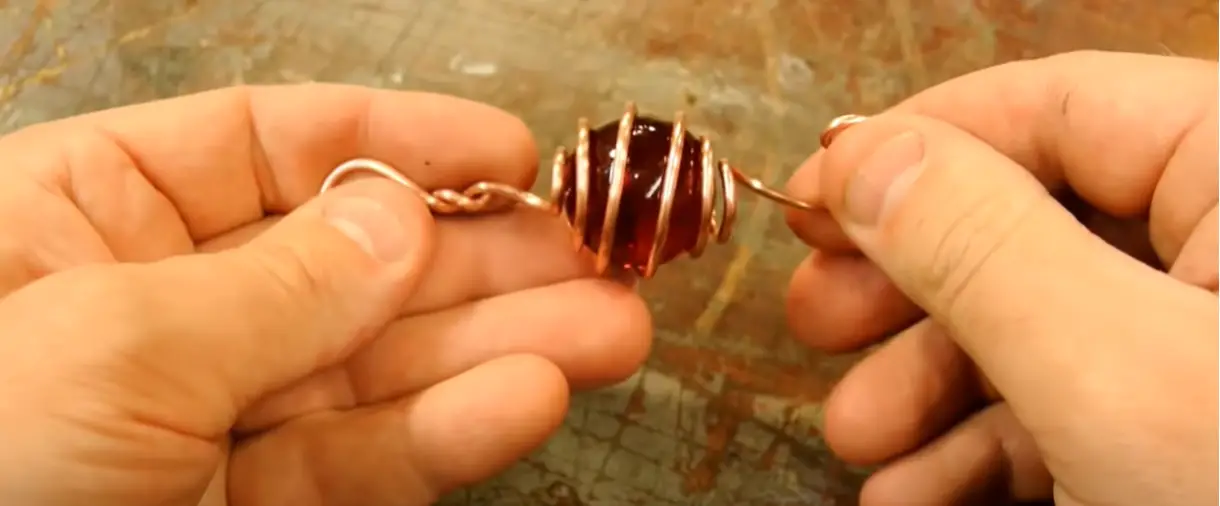
FAQ
Does copper make good wind chimes?
Copper is an excellent material for wind chimes because it has a nice weight to it and produces a clear, bell-like sound when struck. It’s also relatively inexpensive and easy to work with, so it’s a great choice for people who are just starting out with making their own wind chimes.
Another advantage of copper is that it develops a beautiful patina over time, so your wind chimes will only look better as they age. If you decide to go with another material like aluminum or steel, you’ll need to sand and paint them regularly to keep them from rusting.
If you’re looking for the best possible sound quality from your wind chimes, then you’ll want to choose materials like brass or bronze. However, these metals are much more expensive than copper and can be difficult to work with if you’re not experienced.
What is the best metal to make wind chimes?
There are a variety of metals that can be used to make wind chimes, but copper is one of the best options. Copper is a strong and durable metal that will withstand the elements and last for years. It also has a beautiful natural patina that will add character and charm to your wind chimes.
If you’re looking for a metal that will give your wind chimes a high-quality look and feel, then copper is the way to go. Keep reading for more tips on how to make copper wind chimes.
What kind of pipe is used for wind chimes?
Copper is the best material to use for wind chimes because it will not rust and it has a beautiful patina that changes over time. You can use any type of pipe that you like, but copper is the best choice.
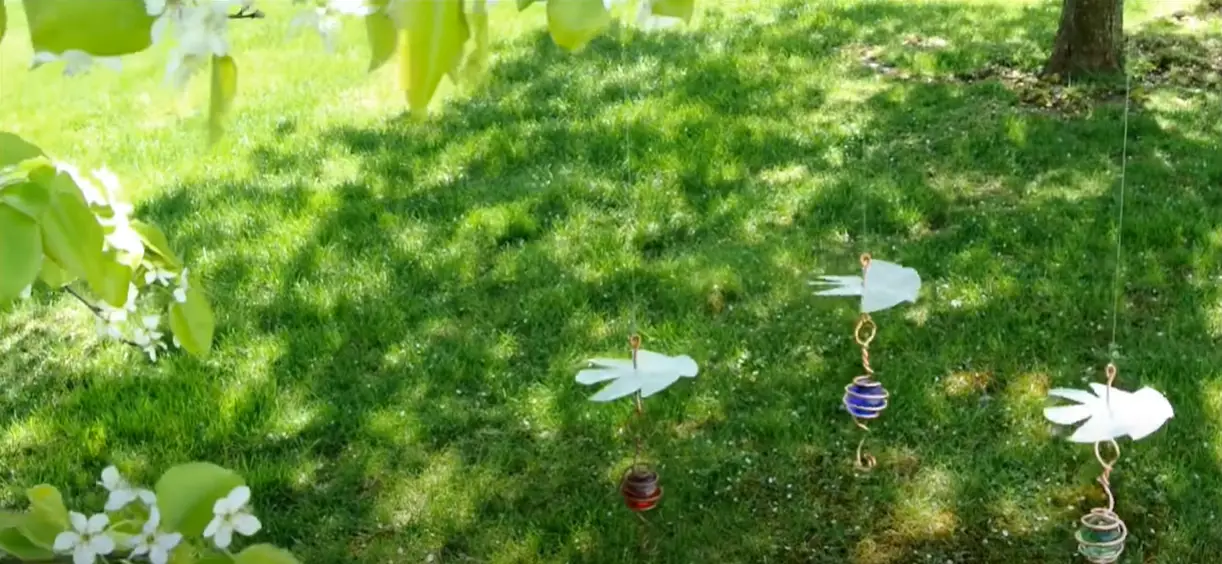
If you want to use a different type of metal, make sure that it is coated so that it does not rust. Stainless steel is a good option because it will not rust and it has a beautiful finish.
You can also use wood for your wind chimes, but make sure that the wood is sealed so that it does not rot. Cedar is a good choice because it is naturally water resistant.
How do you make a wind chime sound deeper?
There are a few ways to make your wind chime sound deeper. One way is to use a heavier gauge of wire for the clapper. Another way is to use a longer piece of tubing for the chime. You can also try filling the tubing with sand or another material to weigh it down and change the tone. Finally, you could add more tubes to create a fuller sound. Experiment with different combinations of these factors to create the perfect sounding wind chime for you!
If you’re looking for a more unique wind chime, try making one out of copper! Copper has a beautiful, mellow tone that will add a touch of elegance to any home. Plus, it’s easy to work with and you can find all the supplies you need at your local hardware store. Follow the steps below to learn how to make a copper wind chime.
First, you’ll need to gather your supplies. You’ll need a length of copper tubing, some copper wire, pliers, and a hammer. You’ll also need something to use as a clapper. A small stone or piece of metal will work nicely. Once you have all of your supplies, it’s time to get started!
Start by cutting the copper tubing into lengths of different sizes. The longer the tube, the deeper the tone it will create. Once you have all of your pieces cut to size, use the wire to attach them together. Make sure that they are securely attached so that they don’t come apart when they are hanging from the chime.
What makes a good wind chime?
This is a question that often comes up, and there is no easy answer. There are many factors to consider, such as the weight of the chime, the material it is made from, the length of the chime, and the overall design.
In general, a good wind chime will be made from a sturdy material that can withstand high winds without breaking. It should also be designed in such a way that it produces a pleasant sound when struck by the wind.
Many different materials may be used to create wind chimes, but copper is one of the most effective. Copper is strong and durable, yet lightweight enough to produce beautiful tones when struck by the wind.
If you’re interested in making your own copper wind chimes, here is a comprehensive guide to help you get started.
What scale is best for wind chimes?
The most important factor in choosing a scale for your wind chimes is the overall size of the chime. The scale should be in proportion to the size of the area where the chime will be hung. For example, if you are hanging the chime on a large patio, you will want to choose a larger scale than if you were hanging it on a small balcony. Another factor to consider is the type of sound you want your wind chime to make. If you want a gentle, relaxing sound, you will want to choose a smaller scale. If you want a louder, more dramatic sound, you will want to choose a larger scale.
Here are some general guidelines:
- For a small space: Choose a chime with a diameter of 20 inches or less.
- For a medium space: Choose a chime with a diameter of 21 to 36 inches.
- For a large space: Choose a chime with a diameter of 37 inches or more.
Keep in mind that these are only guidelines. The best way to choose the right scale for your wind chimes is to experiment until you find the perfect sound for your space.
Which wind chimes are best?
Copper wind chimes that are made with poor quality materials and craftsmanship will not create the same soothing sound. They should also be designed to last, so look for chimes that come with a warranty.
There are many different styles of copper wind chimes available, so it’s important to choose one that fits your taste. The more traditional style of design is perfect for those who want their space to be filled with old-fashioned charm. For something modern, go ahead and try out the sleek and simple styles that are trending right now.
Let’s talk about the size of your chime. If you want it to be heard from far away, choose a larger size that is more visible and sounds loud in general compared with other bells around town who are smaller by comparison – this will make sure everyone knows what time your clock belongs! For those living within close proximity others might not always notice their bell so much but if yours has pride of place on an tallest tower or gong table then go ahead take advantage while they still remember where things stand here at home.
With so many different options available, it’s important to do your research before purchasing a copper wind chime. This guide will help you narrow down your choices and find the perfect chime for your home.
Copper wind chimes are an excellent way to add beauty and relaxation to your outdoor space. Trying to pick the right type of clothing can be a daunting task, especially with so many options available. Use this guide to find the perfect copper wind chime for your home.
When it comes to choosing the right size, it’s important to take into consideration the location where you’ll be hanging your chime. If you want it to be heard from far away, choose a larger size. If you’re hanging it in a smaller space, opt for a smaller size.
Finally, consider the tone of the chime. If you want a relaxing sound, go for a softer metal like aluminum. If you prefer a more vibrant sound, choose a harder metal like steel.
Useful Video: Copper wind charm (gift for mom) Gyrocopter!
Conclusion
As you can see, making your own copper wind chimes is a fun and rewarding process. By following the steps outlined in this guide, you’ll be able to create beautiful pieces that will add charm and character to any space. We hope you enjoyed this comprehensive guide on how to make copper wind chimes. If you have any questions or comments, please feel free to leave them below. And be sure to check out our other guides for more great DIY projects! Thanks for reading!
References
- https://backyardscape.com/copper-wind-chimes/
- https://hearthandvine.com/diy-copper-pipe-wind-chimes/
- https://www.chicaandjo.com/make-copper-wind-chimes/
- https://www.instructables.com/Copper-tubing-wind-chime/
- https://theprojectlady.com/diy-tutorial-for-making-a-copper-pipe-wind-chime/

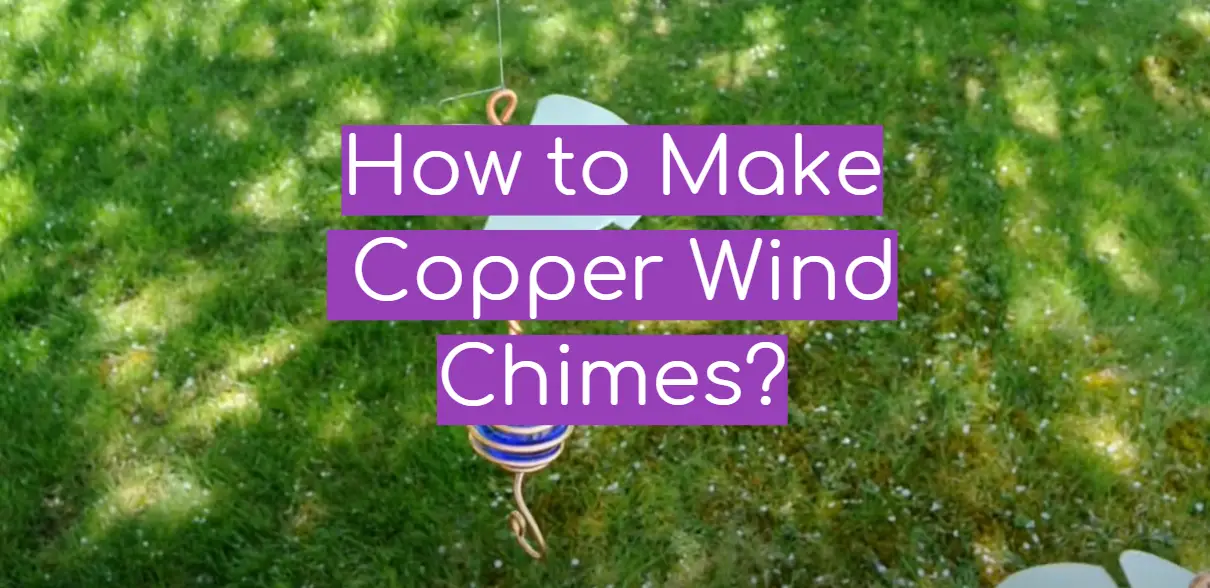




Leave a Reply